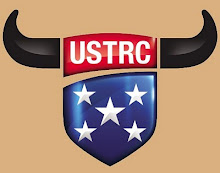Pushing the Barrier by Speed Williams – July 2010
By Fastback Ropes
The Handle
Handling steers is one of the most important factors that allow headers to be successful. There are two common scenarios that prevent good handles. One is where the head horse drops his left shoulder and ducks, going left really hard. This causes the steer to jerk away from the heeler and his back end to be wild making him difficult to heel. The other scenario is when the head horse doesn’t respond to the bridle, or is weak, and doesn’t have control of the steer’s head. Here the steer seems to drift down the arena and the heeler ends up inside and has to throw over the steer’s hip where the right front leg is blocking entry of the heel loop.
There are many headers who reach and have acquired good range with their rope but still don’t realize how important it is to protect the heeler and keep the steer’s feet together. The header’s job is to get it on as fast as you can and to give their heeler the best throw possible.
Most jackpot headers who set up their runs and have a lot of steers caught behind them are very disciplined. They understand the importance of taking care of their heeler and setting up the run where the heeler can finish fast. There are a lot of headers who complain that their heelers can’t catch. If you consistently have heelers who can’t catch behind you, take a good look at you and your horse to see what’s causing it, especially if they’re catching for other headers.
The art of handling a steer is to get control of his head as smoothly as possible without breaking stride or changing speed. When I started heading I was taught to slow a steer down and hop him off and that is still widely taught today. The problem with this is once a heeler picks up the bridle reins, he loses all the momentum he had going down the arena. When heelers have to pull on the reins, they quit swinging their rope as fast and when the steer takes off again they have to start over from scratch. Heelers rope better when they can keep speed on their rope. Once they have to pull back a lot of things can happen: their swing goes to the right, it slows down, they lean forward, and all of these can make getting the heel rope under the steer more difficult.
You want to handle the steer smoothly in full stride and come back towards the heading box in a 10 to 15 degree angle. This angle allows for better entry of the heel loop. I learned this heading for Clay O’Brien Cooper.




























